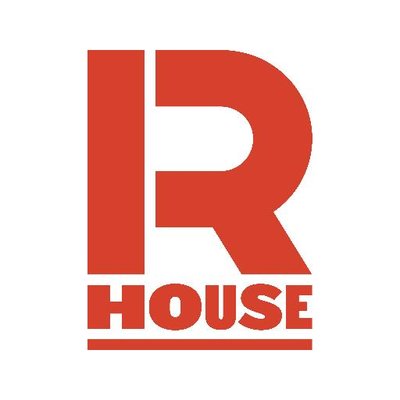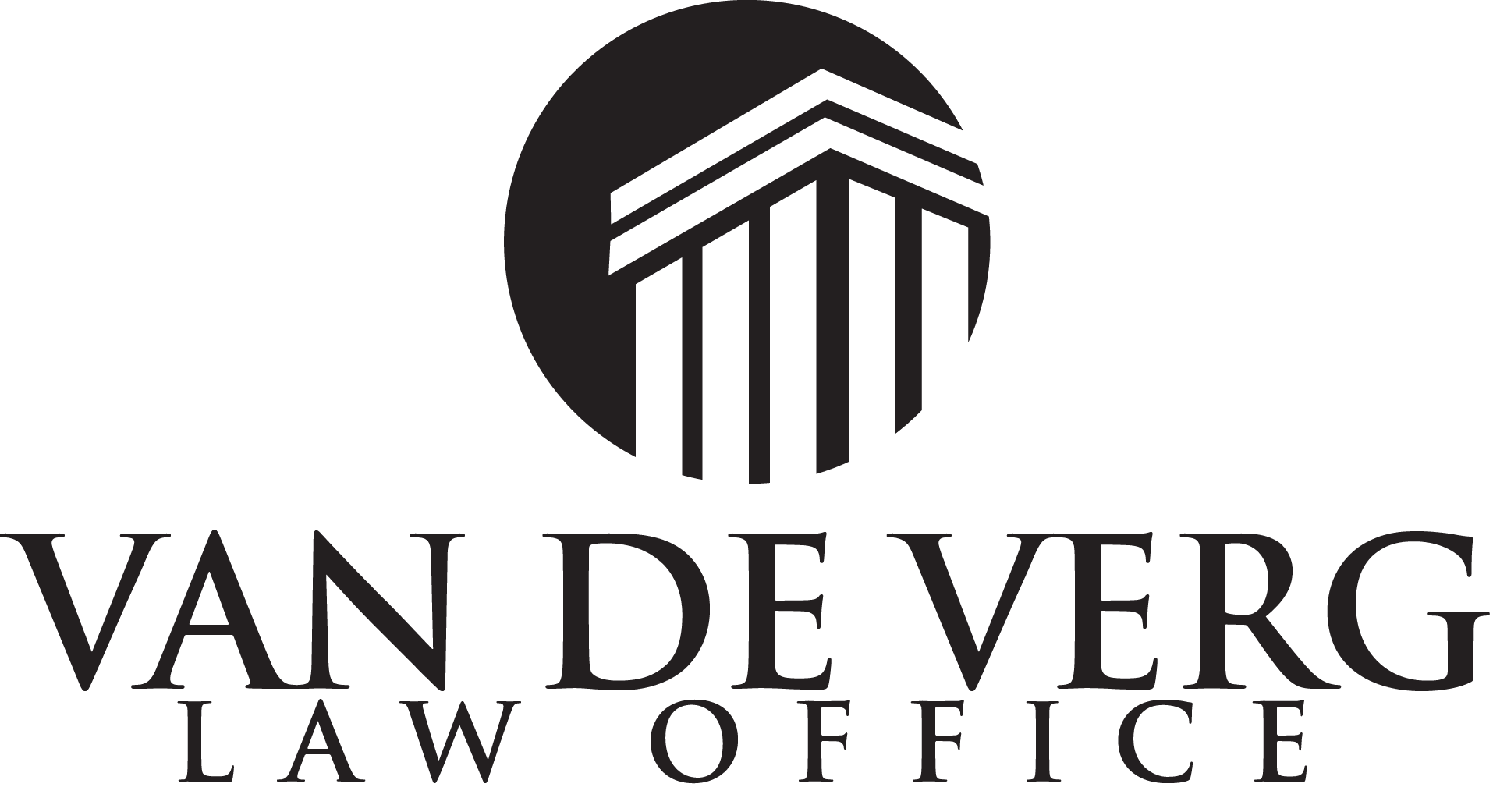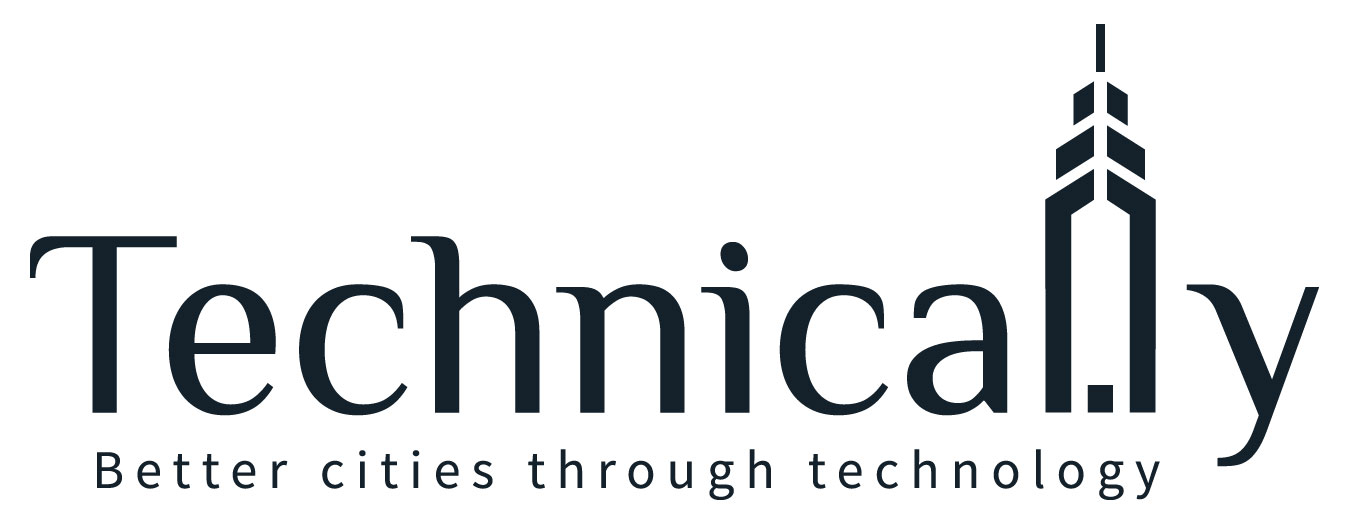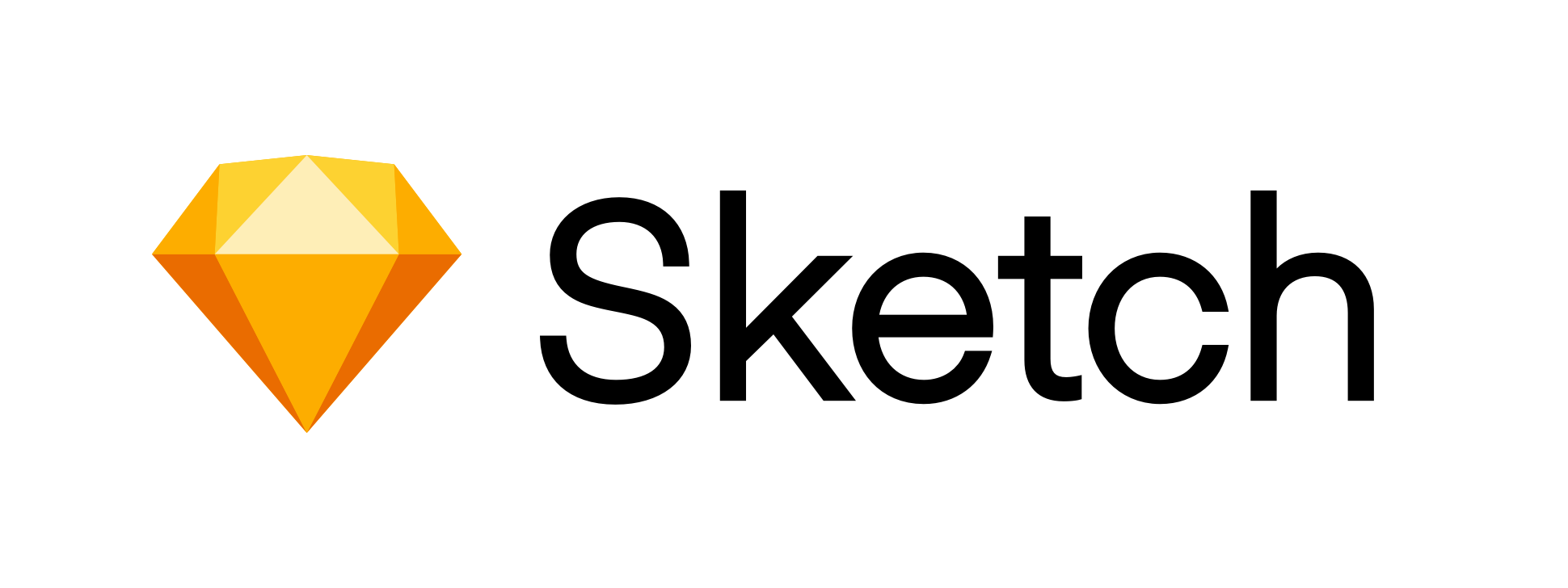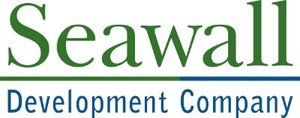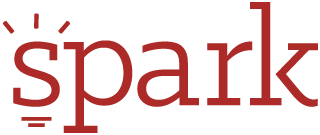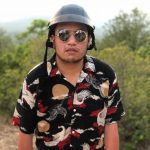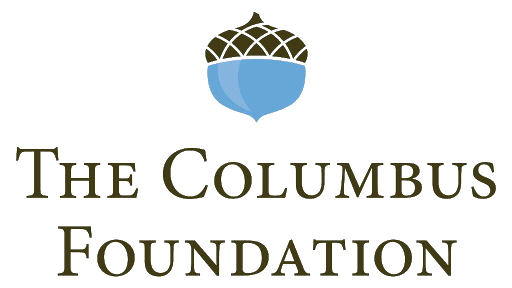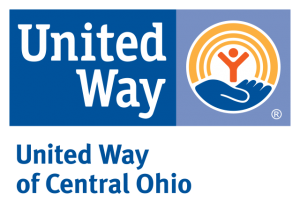
Baltimore
February 1-3, 2019
Allovue
Overview
Schedule
Friday - February 1
- 5:30pm
- Doors Open
- 6:00pm
- Dinner & networking (don't miss this!)
- 6:30pm
- Friday night begins! We'll cover everything you need to know, let you pitch, vote on top ideas & form teams for the weekend
- 10:30pm
- Wrap up!
- 10:45pm
- Facilities close
Saturday - February 2
- 9:00am
- Doors open & breakfast to start the day!
- 11:00am
- Morning business/mentors arrive
- 12:45pm
- Community Updates - Everyone Circles Up & Pitches their Empathy / User Validation Learnings
- 1:00pm
- Lunch
- 3:00pm
- Afternoon Mentors arrive
- 6:00pm
- Dinner
- 10:30pm
- Wrap up!
- 10:45pm
- Facilities close
Sunday - February 3
- 9:00am
- Doors open + breakfast to start the day
- 10:00am
- Business/mentors arrive + community updates
- 12:00pm
- Lunch
- 1:00pm
- Pitch practice and presentation tech check
- 4:00pm
- Dinner
- 5:00pm
- Final Presentations Begin
- 8:00pm
- Judging and awards
- 8:30pm
- Wrap up and celebrate
- 8:45pm
- Facilities close
Judges
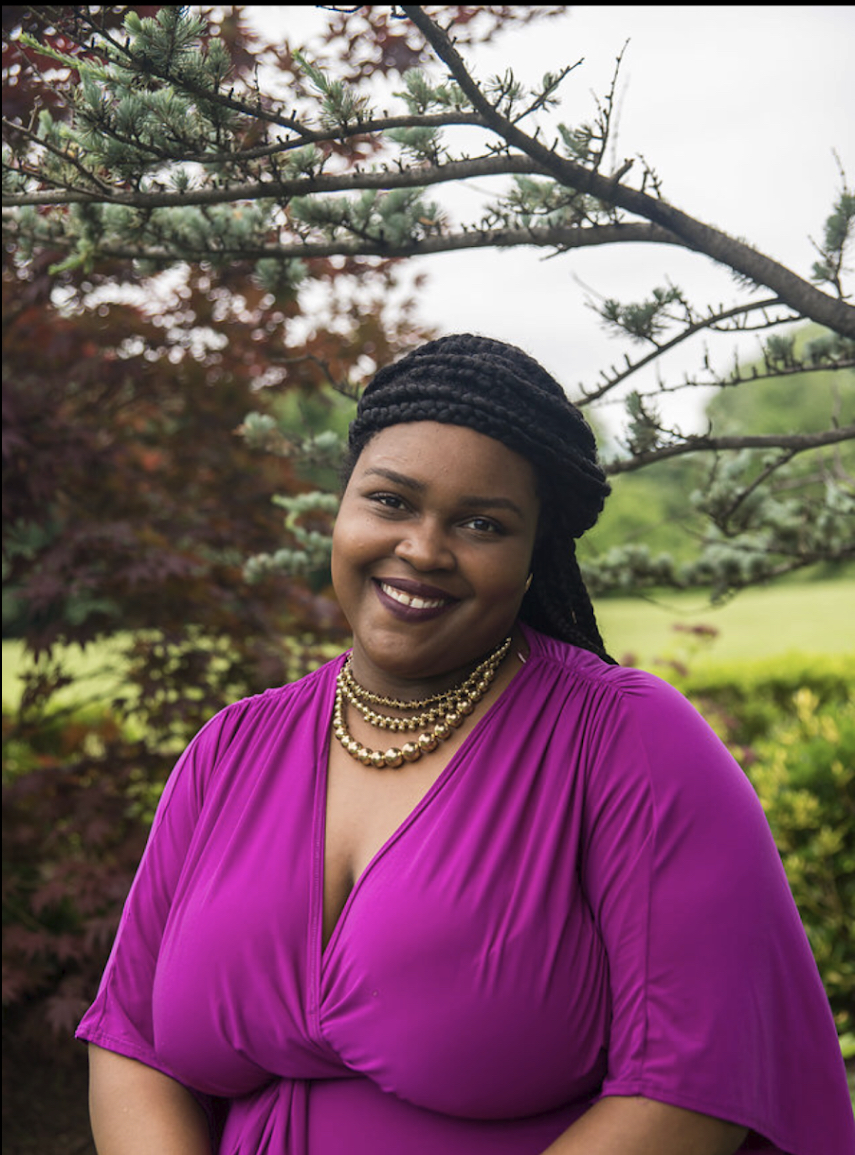
Brittany Young
Founder of B360
Brittany Young is Baltimore native and founder of B-360. B-360 utilizes dirt bike culture to end the cycle of poverty, disrupt the prison pipeline, and build bridges in communities. In partnership with Baltimore City Community College and NASA, she serves as the project manager of the BCCC STEM Scholars Program - merit based scholarship and internship program designed to increase the number of African- ... Read More »
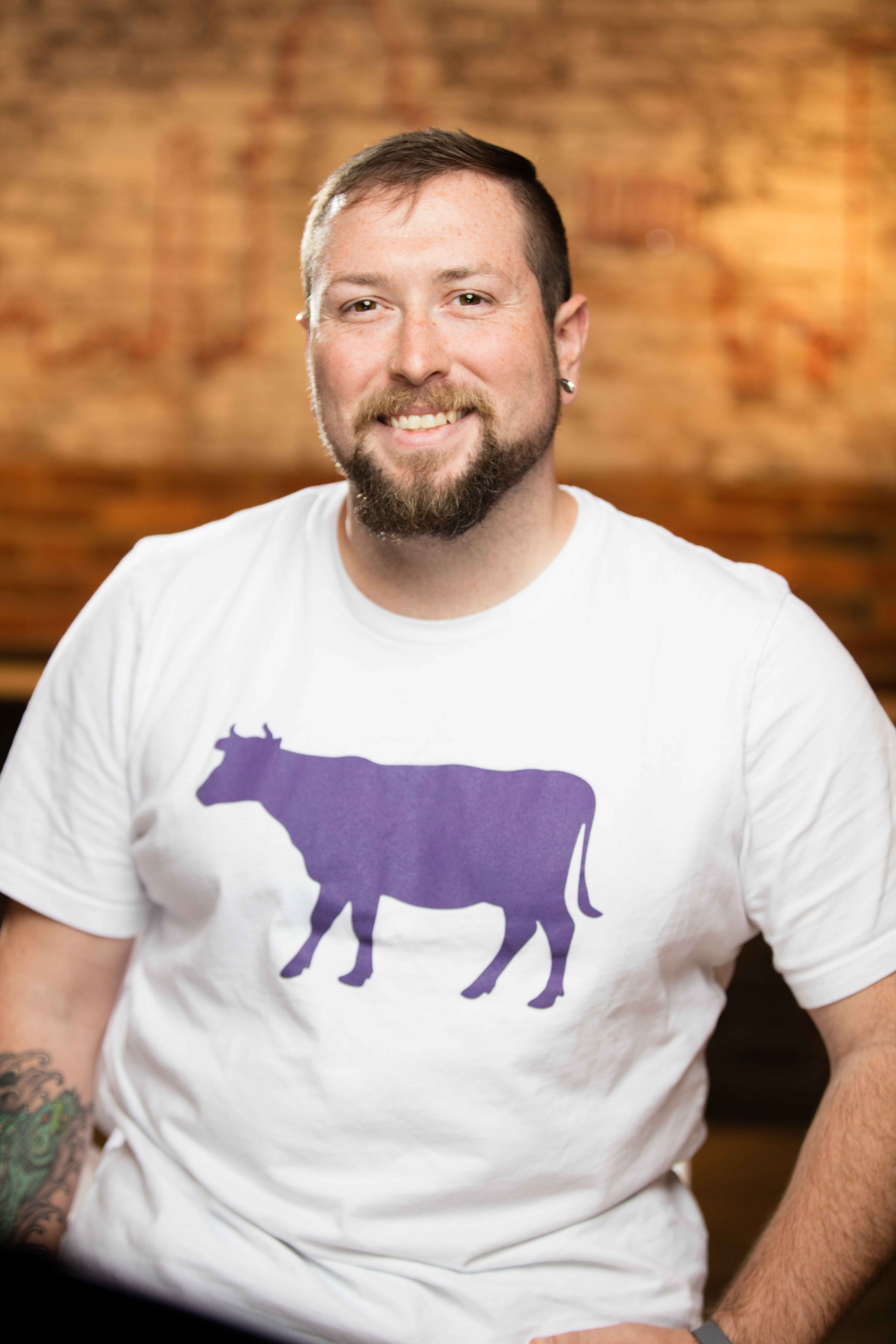
Eric Sabelhaus
DevOps at Fearless
Eric is a DevOps engineer and a full-stack software engineer working at Fearless. He's designed, aided in, and facilitated the successful deployment and engineering on numerous large scale applications. Eric has always had a passion for building and implementing applications that meet core user needs, and he promotes application success at the development team-level using a well-practiced scrum agile ... Read More »
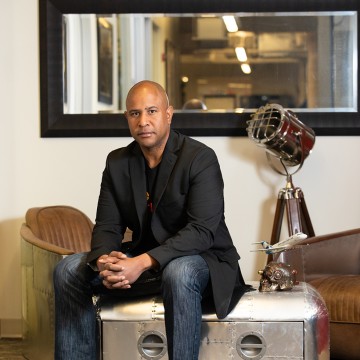
Vincent Sharps
Vice President, Mindgrub
As the son of a retired U.S. Air Force officer, Vince spent most of his childhood traveling around the country and the world, spending many of his formative years being raised in Europe. He attributes his worldview and character to this upbringing abroad. Traveling the world at a young age showed him how fortunate he was, especially relative to the youth in other countries. This made a deep impression, ... Read More »
Mentors

Smitha Gopal
CEO of Rendia
Smitha Gopal is the CEO of Rendia, a Baltimore-based company that creates visual patient education software to help doctors and patients communicate with each other. Prior to joining Rendia (formerly Eyemaginations), Smitha worked at a boutique investment bank. She earned an MBA from the Wharton School of the University of Pennsylvania and a BS in Finance from the University of Virginia. Smitha is a ... Read More »
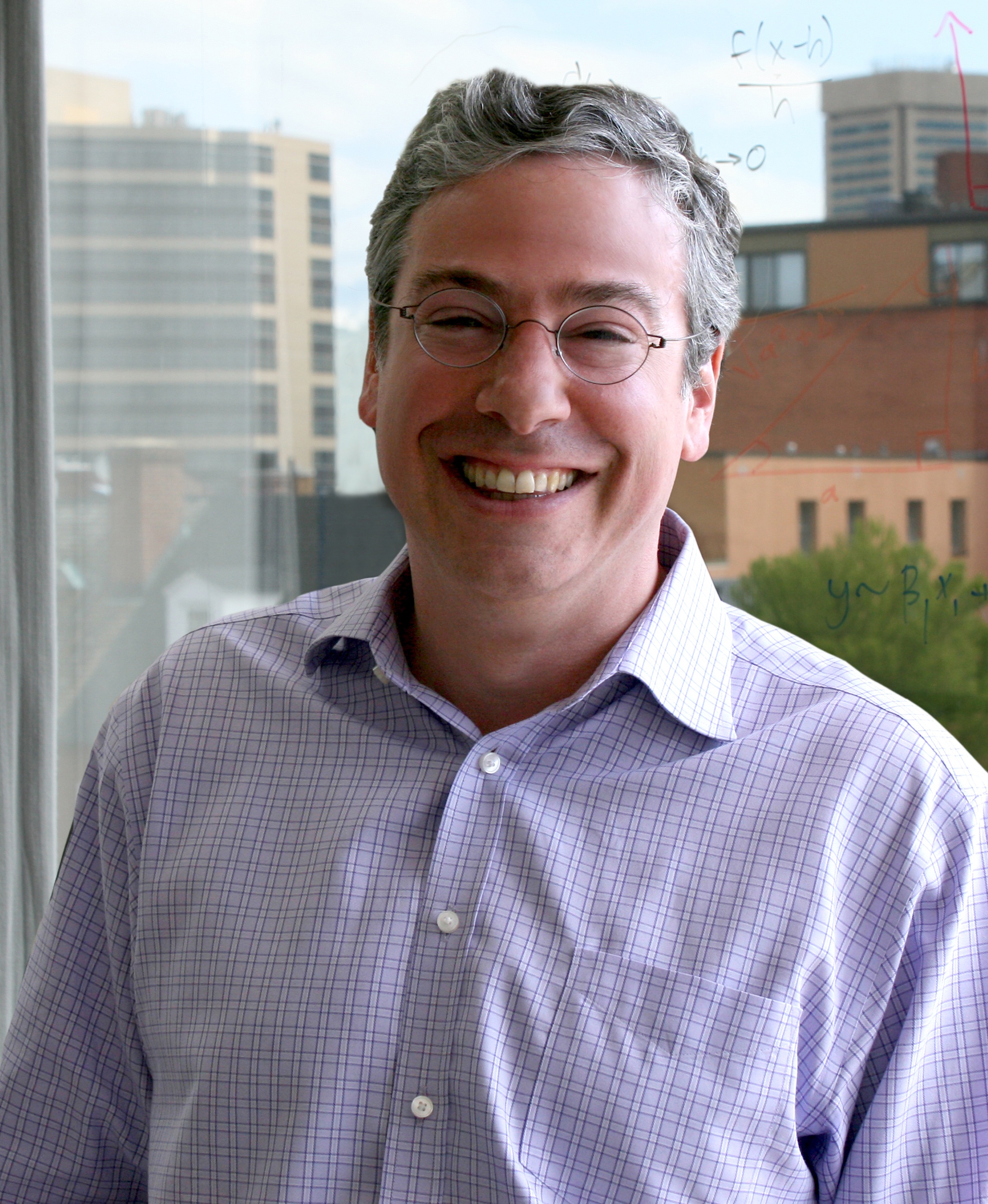
Michael Rosenbaum
Chairman and CEO of Arena
Mike founded and is the Chairman and CEO of Arena, which applies predictive analytics and artificial intelligence to talent, hiring, and team assembly. Mike also founded and is now the Executive Chair of Catalyte, a company he started to apply predictive analytics and artificial intelligence to the software engineering industry, with the goal of improving productivity and results of software engineering ... Read More »

Myra Norton
President and COO of Arena
Myra Norton is the COO and President of Arena. Norton has extensive academic experience as an administrator and professor in mathematics and statistics at Temple University, Towson University and the United States Naval Academy. She has been featured as a speaker and facilitator at several industry events and she has collaborated with researchers from Harvard University, Babson College, University of ... Read More »

John Jones
Vice President of Interactive Strategies at Case Foundation
John Jones is the Vice President of Interactive Strategies at the Case Foundation. John leads technical strategy, interactive campaign development and the digital execution for the Foundation’s programs and movements. He has a passion for technology and finding ways for it to both serve and lead the Foundation’s efforts. A developer by education, you can often find John dissecting new technologies ... Read More »
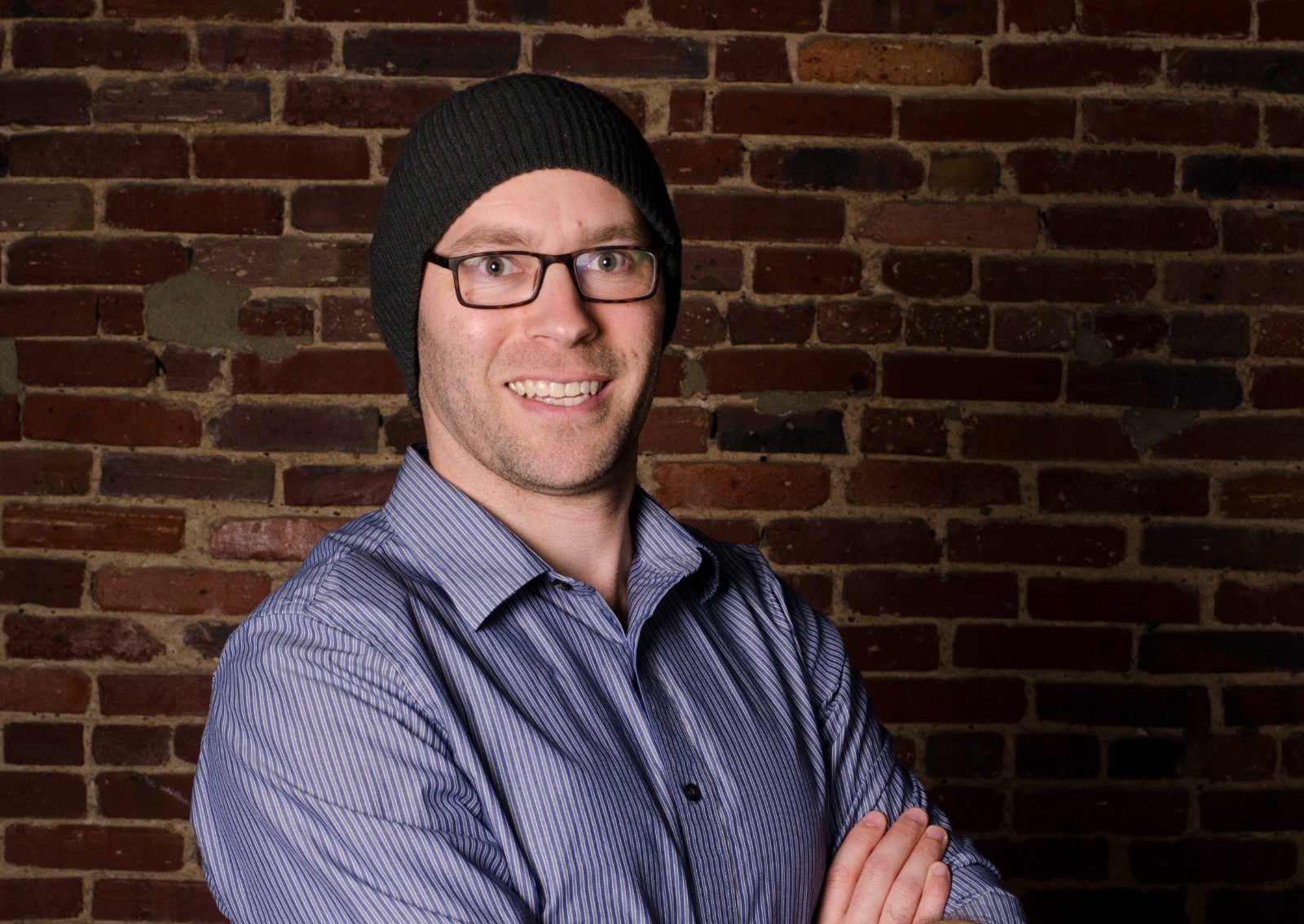
Marc Hausle
Head of User Experience at Bytelion
Marc Hausle is the Head of User Experience at Bytelion, a custom software development firm located in Hampstead, Maryland that builds applications for start-ups, enterprise clients, and government clients. Marc is a user experience expert dating back from his career at Apple and Google. At Google, he led and built the Google Play Review Team and made an impact on hundreds of apps used by billions of ... Read More »

Chris Van de Verg
Principal at Van de Verg Law Office
Chris Van de Verg is the start-up entrepreneur's best friend. He is passionate about ensuring the success of new businesses from set up and incorporation, all the way through to the final details of a sale. At every step, he will protect your business and your interests, and provide peace of mind throughout. Chris helped found Annapolis-based CoreTel Communications, Inc. and served 19 years as General ... Read More »
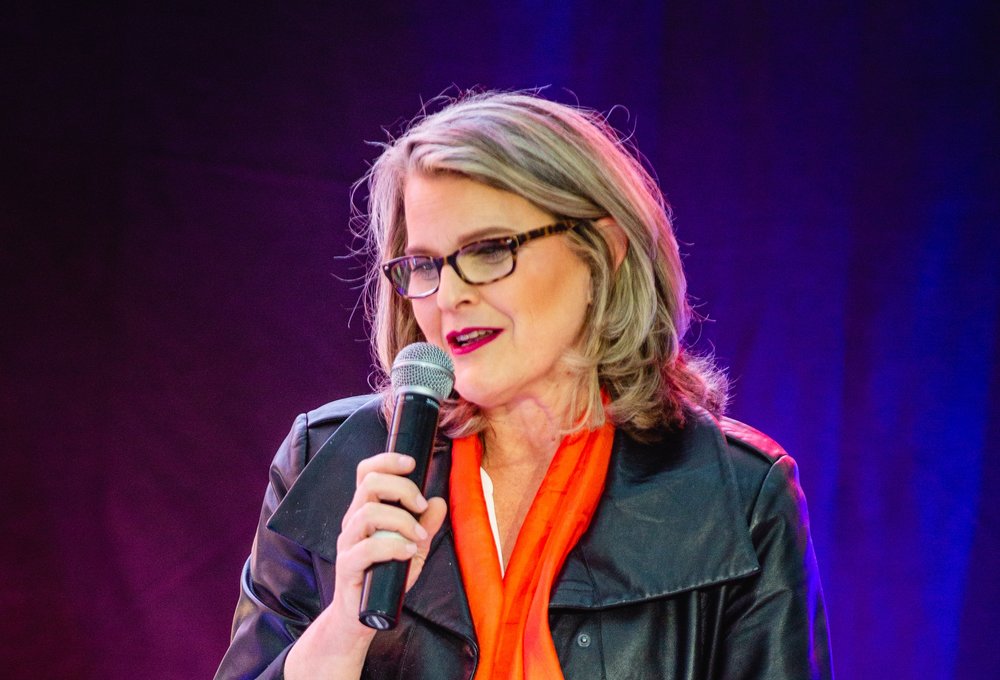
Jamie McDonald
CEO Generosity Inc. and Co-Founder at The Courageous
Jamie McDonald is the Founder of Generosity Inc. Jamie McDonald is a nationally known social-sector entrepreneur. She serves as an advisor to socially motivated CEOs and visionaries driving large-scale change. After 16 years as an investment banker, Jamie shifted her personal mission from startups and venture capital to innovation and growth of the generosity economy. She launched Generosity ... Read More »
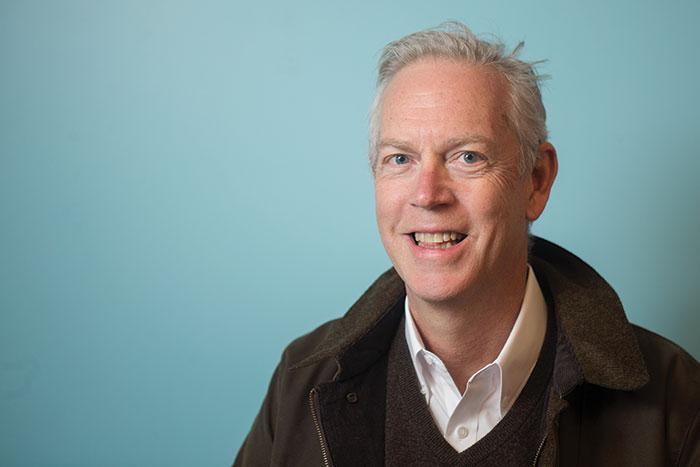
John Cammack
Managing Partner of Cammack Associates
John H. Cammack is Managing Partner of Cammack Associates, which specializes in early stage investing in enterprises advancing brain fitness, business services and educational attainment. From 1991 to 2009, Mr. Cammack was a senior executive at T. Rowe Price where he served as Division Head and member of the firm’s Operating Steering Committee, Institutional Marketing Steering Committee, Compliance ... Read More »
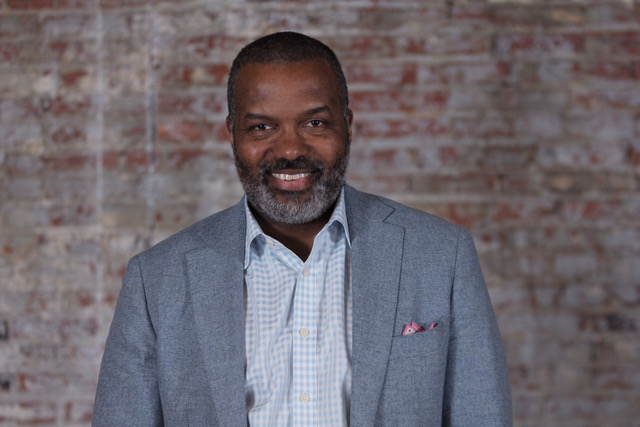
Jeff Cherry
Founder, CEO and Managing Partner: SHIFT Ventures; Founder and CEO: Conscious Venture Lab
Jeff is the Founder/Executive Director of Conscious Venture Lab, and CEO of SHIFT Ventures, an accelerator and venture capital fund for companies that are operating at the intersection of profit and purpose. He is an evangelist for the transformation of capitalism, attempting to reshape cities and lives through a more human-centered form of work. The fund invests in companies that use societal ... Read More »
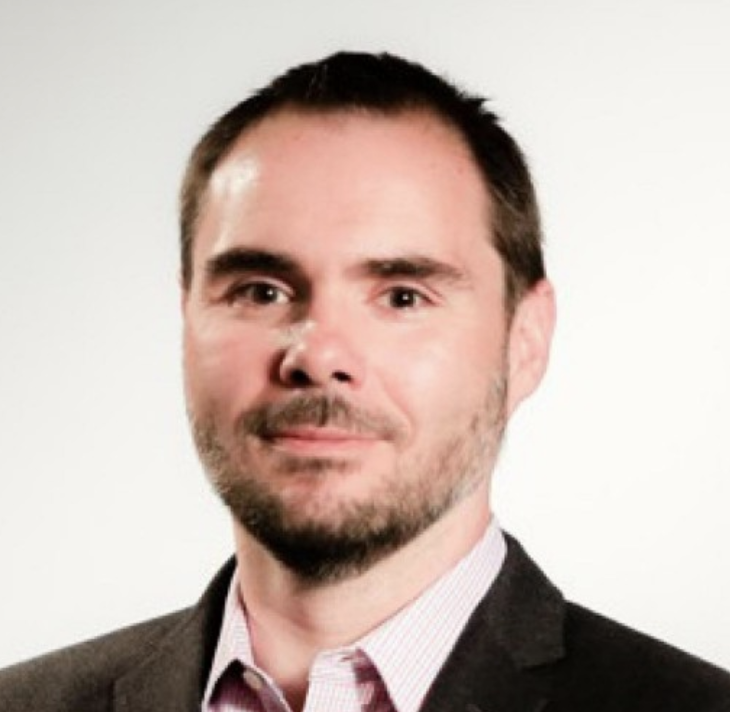
Garth Brantley
Founder at Pilon
Garth is a Baltimore native, serial entrepreneur and life-long coder. Garth has been creating software since 1985 and companies since 1993. In 2014 Garth founded Subscribe Pro, a leading provider of subscription commerce software and solutions. Subscribe Pro provides solutions to leading e-commerce brands around the U.S. and the world. Most recently, Garth founded Pilon, an API-first e-commerce ... Read More »
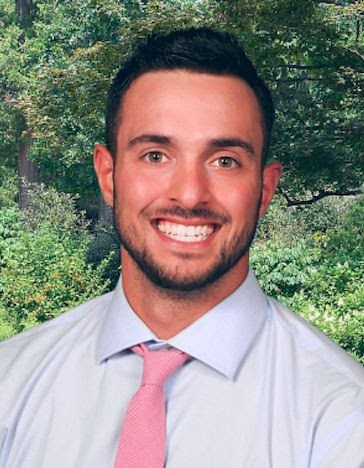
Peter DeCandia
Founder and CEO, Teacher Props
Pete DeCandia is a Baltimore-based education entrepreneur. He the Founder and CEO of Teacher Props, which supports new Baltimore teacher’s transition into the city and helps them secure great housing. Pete came to Baltimore in 2013 to join Teach For America where he taught math at Woodlawn High School and coached baseball and mock trial. He spent four years teaching before leaving the classroom ... Read More »
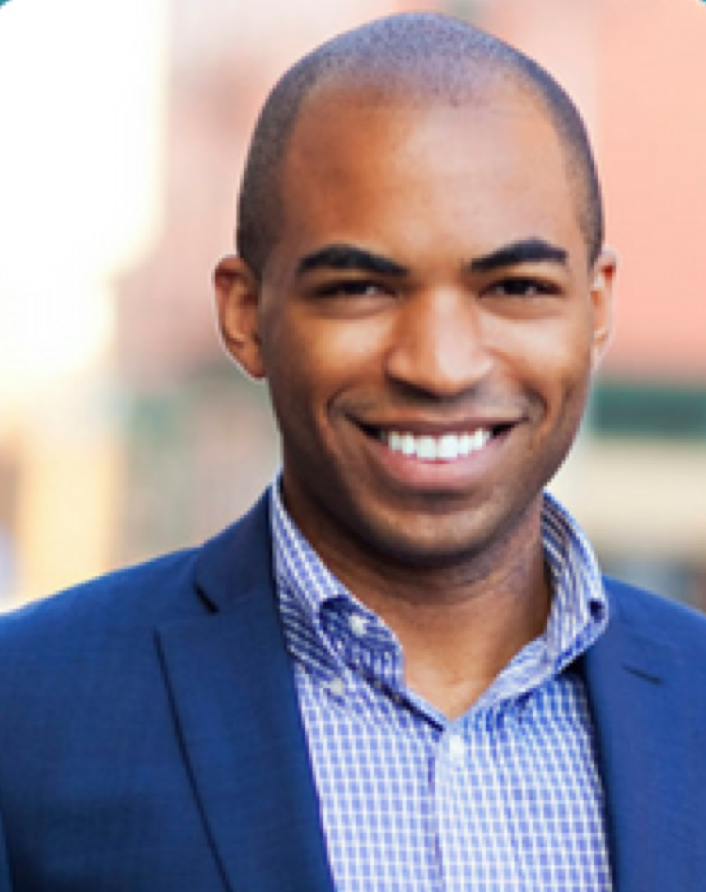
Opeyemi Thomas
CEO and Founder, Roadi
Ope Thomas is an entrepreneur, with technical and industry experience in finance and technology. He founded Roadi which provides users on and off street parking recons using historical and real time data. Their vision is to revolutionize transportation, to provide users and customers a way to transform parking into meaningful collaborations.
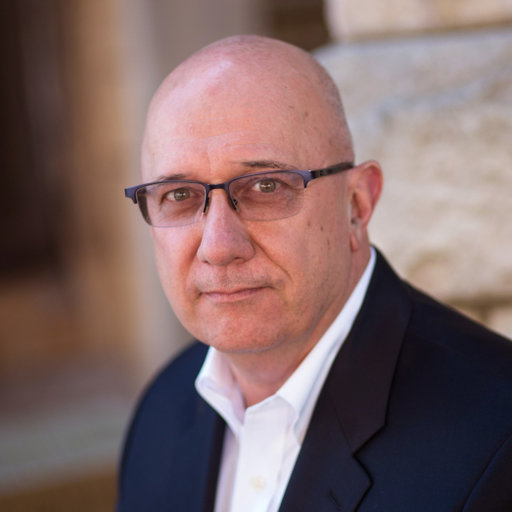
Jim Kucher
Faculty Program Manager of the Graduate Research Innovation District at the University of Maryland, Baltimore
Dr. J. Howard "Jim" Kucher is the Faculty Program Manager of the Graduate Research Innovation District (“The Grid,”) at the University of Maryland, Baltimore. He is also a Senior Lecturer in the MS in Health and Social Innovation, launching in the Fall of 2019. Dr. Kucher is an internationally recognized thought leader in social entrepreneurship. Prior to joining UMB, Jim was an Assistant Professor ... Read More »
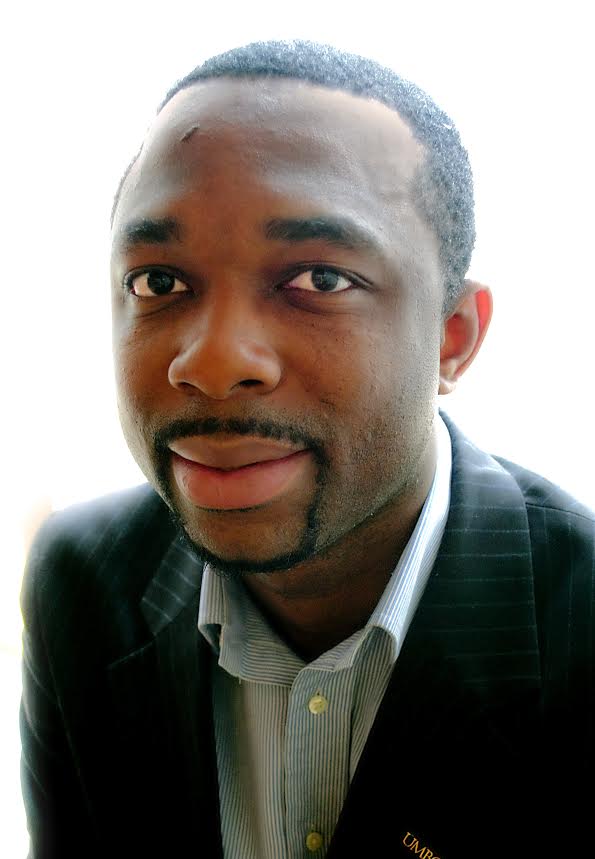
Jay Nwachu
Chief Innovation Officer at Innovation Works
Jay is the Chief Innovation Officer at Innovation Works, a Baltimore based organization dedicated to addressing Baltimore’s neighborhood and racial wealth divide through social entrepreneurship. Innovation Works aims to support and resource community members to build and own successful social enterprises that create sustainable neighborhood economies and result in a better family living, more resilient ... Read More »
Organizers
Valerie Garrison is a Product Manager at emocha Mobile Health, a Baltimore-based startup building high-impact technology in the public health sector. Valerie is also a Venture for America (VFA) fellow and the Social Impact Liaison for the Baltimore VFA Chapter. In her free time, Valerie enjoys biking, swing dancing, and engaging in her local community.
Olivia is a 2016 Venture for America fellow who works for Sagamore Ventures. She grew up in Catonsville and went to UNC for college, where she studied economics and entrepreneurship. She completed internships at startups in NYC (Honest Buildings) and San Francisco (Airbnb). Now she spends her time outside of work running, mentoring through Thread, beekeeping, cooking, reading memoirs, and using the fireplace in her apartment.
Snehal Sawlani works as Client Success Manager at Arena, a predictive analytics startup in Baltimore, MD. She is also a Class of 2015 Venture for America alumnus. Previously, Snehal has worked in R&D at a large pharmaceutical company and in an academic stem cell research lab. She co-founded her university's chapter of iGEM, an international synthetic biology research competition. Outside of work, ... Read More »
Kevin is currently the Student Venture Coordinator for FastForward U - the branch of Johns Hopkins Technology Ventures which provides entrepreneurial education and resources to Hopkins students. He graduated from Georgetown University in 2016 with a M.S. in Science, Technology, and International Affairs (STIA for short) and is a 2017 Venture for America fellow. Kevin is also the Co-Founder of What's ... Read More »
Mike Ong is an Associate at Legends of Learning, a D.C.-based startup focused on creating science games for grades 3-8 that increase engagement and test scores. Mike is a 2018 Venture for America fellow and graduated from Ohio State with a major in accounting. Mike enjoys cooking, finding new music, and engaging in his local community.
Nitin Sampathi is a multi-disciplined designer from Baltimore, MD, who currently works as an Interaction Designer at emocha Mobile Health. He graduated from the Maryland Institute College of Art with a Master's in User Experience Design in 2017. During his free time he enjoys hiking, re-watching episodes of The Office, and exploring and documenting Baltimore through drone photography.
Karina Mandell graduated from St. Mary's College of Maryland and after a few years. moved from social work to social entrepreneurship and impact projects. She is now building Green Smart Cities, working to create a sustainable community, an EcoDistrict, within Baltimore. In addition she also leads Sync The City, a tech startup that offers a marketplace for companies looking to share resources and ... Read More »
Brooke Savage is a Baltimore native, graduating from University of Maryland Baltimore County with B.A in Global Studies in 2016. She spent her first two years after graduation in the nonprofit sector working with refugees and teachers. She then found myself gravitating to the digital marketing world. In her spare time, she likes to do yoga, listen to the news, and dream of the day she can adopt her own puppy.
Pre-submitted Ideas
-
1. Spare – Change for Charity submitted by Merlin Patterson
Spare – Change for CharitySubmitted by Merlin Patterson
What is the problem are you solving?
Charitable giving does not happen as much as it could. Based on some quick research, people do not donate for a variety of reasons (too small to make a difference, poverty can't be solved, charities aren't vetted), and in America it seems charitable giving is down from previous years. (https://www.theatlantic.com/business/archive/2016/12/americans-donate-less-to-charity/511397/, https://www.thelifeyoucansave.org/learn-more/common-objections-to-giving)
How will this idea solve the problem?
Spare will use the change left over after a purchase rounded up to the nearest dollar and donate it to charities of your choice that have been vetted by us. This will make giving automatic and ensure that the most of your money is making the most impact. Spare will eventually also provide educational tools about charity to help people give even more.
Is this idea brand new or has it been partially-vetted?
Brand New
Why are YOU uniquely positioned to solve the problem? What other people do you need to help?
The team I need includes a designer for great UX, someone connected to charities to form partnerships, and a marketer who can market well to charitable consumers.
As a developer, I am capable of building the scalable platform that Spare needs. As a social entrepreneur, I have the background through fellowships and accelerators to ensure that this idea becomes the leading social platform for change it can be. -
2. Phone Pregnancy Blood Test submitted by Merlin Patterson
Phone Pregnancy Blood TestSubmitted by Merlin Patterson
What is the problem are you solving?
Typical home pregnancy test kits use urine to test for a specific hormone hCG. While these can be accurate, they are less sensitive than blood tests, possibly leading to false negatives. However blood tests have to be done in a doctor's office, which is inconvenient, and typically more expensive.
How will this idea solve the problem?
By using a smartphone and a custom blood test adapter, blood tests can be made convenient, cost effective, and get you more accurate and sensitive results.
Is this idea brand new or has it been partially-vetted?
Brand New
Why are YOU uniquely positioned to solve the problem? What other people do you need to help?
To start off with, as a genderless person who cannot get pregnant, I am not the ideal spokesperson for this tool nor can I give appropriate feedback. So there should be someone on the team who can get or has been pregnant. This can of course merge with another role.
Other roles needed are a bio engineer who can build the blood test adapter, a UX person to design the experience, and someone who understands how to get a device like this approved by the necessary departments
For myself, I can build the mobile app in a scalable way to handle the complexities of blood testing. -
3. Sync the City submitted by Karina Mandell
Sync the CitySubmitted by Karina Mandell
What is the problem are you solving?
Local businesses in Baltimore are unable to take advantage of opportunities because their needs aren't being matched with relevant partners. There is plenty of data to show that most people/organizations are "siloed" and stay within their networks, however research has shown that the "weak ties" can provide the greatest connectivity. Baltimore itself suffers from the "white L" that segregates businesses geographically and racially.
How will this idea solve the problem?
Our idea is to create a network of local businesses that will allow them to broadcast 1) what they are working on, 2) what their needs are, and 3) what amenities they have to offer others, all in real-time. The application will also match businesses with new partners based on specific needs. As a business grows, the app will refine matches and account for skill, knowledge, and ability of partners so that each is on the "same level" to optimize productivity.
Is this idea brand new or has it been partially-vetted?
Partially-vetted
How you have vetted your idea and the success or difficulties you have seen thus far?
We have spoken with local business owners and city leaders, and they all like our idea. We have worked with a few developers to generate a proof of concept, but we are still trying to tie everything together and make a polished product. We need more developers, coders, and designers, in addition to business advice to launch a product.
One of the greatest difficulties is the significant gaps in data. Baltimore has nearly 30,000 businesses. How can we know that any given network is full and complete, without any gaps? In other words, we don't know what we are missing.
Why are YOU uniquely positioned to solve the problem? What other people do you need to help?
I am passionate about helping businesses get what they need, especially non-profits and services. I have seen first hand how organizations lament the lack of resources, yet they don't know about the other organization down the road that can provide exactly what they need. I have acted as a business "matchmaker" in several instances, and have seen the positive interactions, profit, and growth that have resulted when the right two businesses come together. This is a great feeling, but I know it can be scaled up city-wide and will impact everyone for the better. It will break down silos and sync the city!
-
4. HEADS UPP submitted by Velda Day
HEADS UPPSubmitted by Velda Day
What is the problem are you solving?
Helping young men coming out of the youth detention facilities to walk in their future with their heads up and not their hands cuffed. Yes there is plenty of data.
How will this idea solve the problem?
HEADS UPP is a residential facility that will allow the young men an opportunity to change the element from which they came. WE will show young men how to have and keep the mindset to be productive members of society by exposing them to educational tools, workshops, job training, and parenting skills.
Is this idea brand new or has it been partially-vetted?
Brand New
Why are YOU uniquely positioned to solve the problem? What other people do you need to help?
I am a firm believer that if we show our young men how to be responsible they will become the head of their household and the generation cycle will be broken. From talking to young men in gangs and in the streets, it is obvious they were not given the time, attention or guidance needed to be successful. They believe that no one understand them or want to be bother with them, other them those that are like them. Our commitment is to provide interactive learning by teaching awareness and understanding of the factors that contribute to an escalating crisis and the techniques for maintaining control in the face of aggressive behavior. We are in need of residual housing, furniture, household items, food and all the trimmings.
Our Focus:
Relationship Development
GED Classes
Career Development
Substance Abuse Groups
Anger Management Classes
Support Groups for Physical and Sexual Abuse
Healthy Safe Sex Practices & Resources
Gang/Bullying Prevention -
5. Art Gives submitted by Kristen Nixon
Art GivesSubmitted by Kristen Nixon
What is the problem are you solving?
According to the World Health Organization, one in four people in the world will be affected by mental or neurological disorders at some point in their lives. The ubiquity of technology, pressure to become successful by society's unforgiving standards, obligation to maintain a perfect social media presence, and rapid pace of change in today's world all contribute to producing a population where mental disorders are commonplace. As a sophomore in high school, while reading an Instagram caption of a yoga influencer, I discovered the concept of self-care and became frustrated by the fact that I hadn't heard of it sooner. As Guy Winch aptly observes in his Ted Talk, “We brush and floss our teeth daily, but what do we do to maintain our psychological health?” I grew up in a culture where the term "mental health" was synonymous with "mental illness," simply because so few considered that mental health was just as worthy as physical health of preventative care. I am determined to show people why they should take care of their mind and how to do it, starting with my college campus.
At JHU, the problems around mental health are striking. Anecdotal concerns about poor mental health among JHU students prompted the university to create a mental health task force to formally evaluate the extent to which JHU’s mental health resources meet students' needs. The Task Force on Student Mental Health and Well-being reported that in a national survey of college students:
· Over half of undergraduate and graduate students reported feeling overwhelming anxiety in the past 12 months.
· Approximately 40-50 percent of students felt so depressed it was difficult to function.
· Approximately 5-10 percent reported consideration of suicide.
· At JHU specifically, undergraduate students report a high frequency of symptoms consistent with the national data and with peer institutions, although slightly higher in some areas such as feeling overwhelmed.
How will this idea solve the problem?
Art Gives will create cultural change at Hopkins, starting with two main tools: offering workshops and selling wellness kits, both with the aim to provide a beginner-friendly, exploratory lesson in using art as a tool for self-care. The combination of these two approaches will encourage students to adopt self-care practices by offering convenient, appealing options to relieve stress.
Our art workshops, free for JHU students, are led by a professional art therapists. Through our partnership with the JHU Counseling Center, all expenses for the workshops are covered, and we are able hold the workshops in classrooms on campus. In our “Express Your Stress” workshops, participants experience a beginner-friendly, exploratory introduction to using art as a wellness tool. Art Gives has worked closely with our art therapists to ensure that these workshops are catered to the needs of JHU students. Emphasis has been placed on giving students stress relief tools they can use after the workshop and ensuring that participants let go of perfectionism in order to enjoy the process of making art.
As a complement to our workshops, Art Gives will sell wellness kits to give students the supplies needed to easily integrate tools learned in the workshops into their daily lives. The kits will include instructions for using art as a wellness tool, so it is useful for all students, regardless of whether they were able to attend our workshops. Our first wellness kit contains all materials and instructions necessary for a restorative watercolor painting session. Art Gives’ wellness kits are specifically designed to offer wellness tools to students in the most convenient and appealing form. Thus, our wellness kits will make self-care activities, such as self-expression through art, convenient and appealing for JHU students.
Is this idea brand new or has it been partially-vetted?
Partially-vetted
How you have vetted your idea and the success or difficulties you have seen thus far?
I have been working on this idea, alongside full-time coursework, with a small team of other undergraduates since February. We were able to win enough funding to launch in the spring, and we are currently getting feedback and planning our launch. However, we have identified a strong need to recruit new team members (possibly other cofounders), and we are still in a position where we can change our idea/approach in response to feedback.
Why are YOU uniquely positioned to solve the problem? What other people do you need to help?
I am really passionate about the issue and have completed coursework in entrepreneurship, social impact, marketing, and leadership. I would like to make this work into my full-time career once I graduate from college. I deeply understand the problem I'm trying to address and my solution, both through personal experience as well as formal research on the topic. In addition, I am a part of my target market, which gives me an advantage in terms of understanding the behaviors of my potential customers. I have acquired a little bit of experience in many aspects of entrepreneurship along the way in working on this project, but our biggest obstacle right now is that the team is composed of a limited number of full-time students. We have the funding needed to launch and have great impact, but we are currently lacking the manpower to execute it. Specifically, we would love to work with people with skills related to marketing, product design, and legal aspects of entrepreneurship. Interest or experience with art, mental wellness activities, mental health resources and/or a knack for detail-oriented execution of a great idea would also be immensely helpful.
-
6. Youth Built Virtual Reality Technology for Social-Emotional Learning submitted by Tonee Lawson
Youth Built Virtual Reality Technology for Social-Emotional LearningSubmitted by Tonee Lawson
What is the problem are you solving?
This venture addresses the problem that Baltimore City schools do not have the time our resources to adequately prepare youth for: the workforce, navigating challenges, maintaining positive relationships, making positive decisions, or ultimate lifelong success due to the inability to integrate social and emotional learning curriculum into a traditional school day. Further, traditional methods of learning produce a 50% retention rate of what is heard and viewed, the VR technology will provide a multi-sensory and interactive learning experience of experiential learning platform and increased retention rate of 80%.
How will this idea solve the problem?
This venture uses a unique and innovative approach, because it takes our proven successful traditional method of SEL training and translates it to a experiential learning environment using modern technology. While VR technology and experiential learning have widely been used by companies for career exploration, professional development, human resources trainings, and even empathy trainings for racial injustices; this technology has never been used with youth of urban cities to develop the life skills that employers desire of employees and the skills that are key in developing character, perseverance, positive behaviors and longterm success. Further, this venture incorporates a youth workforce development component that allows youth to be trained, certified, and ultimately develop a large portion of the technology. The technology will eventually be licensed and sold, allowing youth to earn a profit. This model for social enterprise provides a great opportunity for social impact by stimulating the economy, allowing youth to gain credentials at a young age, and allows them to develop a product to be used by themselves and their peers.
Is this idea brand new or has it been partially-vetted?
Partially-vetted
How you have vetted your idea and the success or difficulties you have seen thus far?
To date, we have developed a social-emotional learning (SEL) curriculum that is delivered using traditional methods of classroom instruction and enhanced by use of manipulatives, puzzles, or games. This existing method of SEL training has been successful youth that participate in the programs experience on average a 85% gain in all program outcomes (academic engagement, positive behaviors, and confidence). We have partnered with youth-serving organizations, recreation centers, schools, and community organizations to deliver the SEL program. These organizations will be potential customers of the new VR technology.
This venture will incorporate our existing social-emotional learning curriculum into youth-developed Virtual Reality (VR) experiential learning technologies. This product will serve as an extension of our successfully proven traditional learning methods. We will then provide a workforce development certification training program for youth in areas of VR production, software coding, and gamification.
Why are YOU uniquely positioned to solve the problem? What other people do you need to help?
I have obtained a Master of Science degree in Biotechnology, which gives me the educational foundation to build this venture. I am the Founder and Executive Director of The Be. Org youth development nonprofit that provides creative leadership development and enrichment programs for youth in the Baltimore-Washington area.. I have near 10 years of experience working with youth, leading teams and developing, implementing, and evaluating programs. I am experienced in developing SEL curriculums and trainings. Through our current methods of curriculum delivery, our youth experience on average an 85% gain in confidence, academic engagement, and positive behaviors. I am also have experience in developing performance measures and evaluations to assess the impact of programs and activities. I was a part of the 2015-2016 cohort of Emerging Leaders in Youth Development fellowship program sponsored by the Maryland Out of School Time Network. I enjoy continuing educational and professional development opportunities. I have had an opportunity to receive training by Ramapo for Children and the RAND Corporation on evidence-based practices for SEL youth trainings. As a leader, I am a progressive and innovative thinker. I am able to foster relationships and make meaningful connections to achieve common goals between collaborating organizations. I am a young professional, servant leader, grassroots organizer, and nonprofit leader with a true passion for empowering youth to rise above their socially-imposed limitations and achieve longterm success.
-
7. Bridging the Gap submitted by Zach Diehl
Bridging the GapSubmitted by Zach Diehl
What is the problem are you solving?
Community relations with civic workers/agencies
How will this idea solve the problem?
Providing a community driven platform that will allow stories and issues to be shared relating to local communities.
Is this idea brand new or has it been partially-vetted?
Brand New
Why are YOU uniquely positioned to solve the problem? What other people do you need to help?
We have the technical team, what we need is community leaders/advocates interested in driving the idea and getting community members to share both positive stories that will help bridge connections as well as ways to improve the community.
-
8. Sound Psyche, a digital app you use to exercise your mind. submitted by Ivan Liao
Sound Psyche, a digital app you use to exercise your mind.Submitted by Ivan Liao
What is the problem are you solving?
The problem is poor mental health in teenagers, college students, and young adults.
The college health institute report over one third of college students saying they've felt "so depressed, it was difficult to function". I've spoken to representatives from college counseling centers and they all report being overburdened.
How will this idea solve the problem?
This solution seeks to be innovative, incorporating things like gamification, virtual chatbots, and machine learning.
I have done extensive market research on mental health apps and they lack substantial gamification, personalized results from data science, and interactable UI like chatbots.
Is this idea brand new or has it been partially-vetted?
Partially-vetted
How you have vetted your idea and the success or difficulties you have seen thus far?
I've been experimenting with the idea for the past 2 years and recently spent 200+ hours in the past 3 months working on it. I am currently beta testing. The features so far include a mood journal, 2 minigames (pet collection with quotes, and a fantasy job rpg), and a database of mood boosting tools.
I think this event could be helpful in getting feedback for my project. In addition, it'd be an excellent place to test out development of a virtual chatbot or the wireframe design of a machine learning system.
Why are YOU uniquely positioned to solve the problem? What other people do you need to help?
I have recently committed to primarily spending a better part of a year fulltime to this project. Plus, I have had 10 years of experience struggling myself with mental health and am part of my target demographic. Last but not least, I push myself out of my comfort zone to be innovative and fulfill my high standards.
I have been working mostly alone, so I have gotten exposure to all aspects of the entrepreneurial process including pitching, coding, design, networking, content creation, and data science. Having said that, I always value the perspectives of experts in those fields and feedback from potential users.
My current plan is to keep being lean and self sufficient. I plan to do the best with the resources available and will decide what to do next based off the reception of the app. -
9. AirTime: Creating Conversational Equity in Work Settings submitted by Anders Lindgren
AirTime: Creating Conversational Equity in Work SettingsSubmitted by Anders Lindgren
What is the problem are you solving?
In America, women earn 78% of what men earn. Black men earn 73% of what white men earn. And just about any member of a minority group can describe many times when they've been in a meeting and a coworker has steamrolled over their ideas, hijacked the conversation, or cut them off repeatedly.
In Google's famous research on the efficacy of teams - Project Aristotle - they discovered that many traditional assumptions about teams were false. The teams with the the smartest or most successful people were not always the most successful teams. However, they found that one consistent predictor of strong team performance was "equality in distribution of conversation turn taking"; in other words, teams where everybody contributed to the conversation equally performed better.
Though we now know this fact, the problem is that most organizations do not have tools to collect data on "Air Time" during meetings, or they do not spend time analyzing this data and creating actionable insights to drive performance. Essentially, although the data is clear that conversational equality is critical to teams, most organizations are doing little to ensure that their teams are driving towards this goal.
How will this idea solve the problem?
AirTime will be a voice recognition software that can be used during meetings or conference calls to collect data on the conversation patterns of groups. "What gets measured gets improved" and AirTime will start by making this data visible - at the end of a meeting everybody can see who occupied how much "Air Time".
As AirTime gets used more frequently within organizations, it will be able to provide additional insights, and to drive change. AirTime will be able to identify and report patterns across the organization, such as identifying whether men tend to speak more in meetings than women, whether certain employees tend to take over the conversational space of meetings, or whether certain leaders facilitate very equitable meetings.
Additionally, AirTime will be able to correct the course of meeting mid-conversation if necessary by providing alerts such as "One person has been speaking for 75% of this meeting; consider encouraging equal participation from everybody". AirTime will be uniquely positioned to solve this problem because it will be the first platform collecting all of this data with an eye towards driving change in the conversational style of organizations, especially as it relates to meeting patterns that exclude or devalue the contributions of minority team members.
Is this idea brand new or has it been partially-vetted?
Brand New
Why are YOU uniquely positioned to solve the problem? What other people do you need to help?
As the Founding Director of a charter school, I helped build an organizational culture from the ground up, serve as the HR Director for the organization, and have seen issues of conversational equity play out from staff brainstorms to Board Meetings to Middle School classrooms. I have seen men hijacking the contributions of women in meetings, just as I have seen 7th graders with more privileged backgrounds hogging air time in classrooms and leaving less privileged peers feeling uncomfortable asking questions. I have worked with both very healthy and very unhealthy groups, and spent lots of times coaching unhealthy groups towards a better paradigm. We need additional folks with technical expertise, people with experience in the HR space, and experience monetizing products. Most importantly we need a diverse and dynamic team!
-
10. Refugee Connection: Uniting Service Providers and Volunteers to Better Serve Newcomers submitted by Christie Smith and Amina Touma
Refugee Connection: Uniting Service Providers and Volunteers to Better Serve NewcomersSubmitted by Christie Smith and Amina Touma
What is the problem are you solving?
Refugees in Baltimore are not always able to access the services available to them due to transportation and cost barriers or because they aren’t aware they exist. At the same time, there are many volunteers who want to support the refugee community in Baltimore but are unsure of how to engage. Many service providers could benefit from volunteers but don’t have the capacity to support a large volunteer program.
How will this idea solve the problem?
The idea is to create a volunteer database of anyone who has expressed interest in volunteering with the refugee community. This database will include their name, skills, desire to engage, availability, etc. and these volunteers can be called upon by organizations for one-time tasks or to support clients on a longer term basis. By logging specific talents and skills that volunteers have, they can be utilized in more creative ways and therefore assist in solving challenges in access to services.
In the long term, the individuals or organization managing this database could establish centralized trainings and a standardized on-boarding process for all volunteers city-wide. Prior to being matched with an organization, volunteers would complete the on-boarding process through this management.
Services and volunteer talent to support refugees oftentimes already exist in Baltimore, but the problem is knowledge and access, as well as a unified system to organize everything. While this is only a first step, we believe a centralized database will better connect refugees in the city to support they request.
Refugee Connect is an organization is Cincinnati that has effectively used a similar model. We have been in conversation with them about how to replicate components of that model in Baltimore.
Is this idea brand new or has it been partially-vetted?
Brand New
Why are YOU uniquely positioned to solve the problem? What other people do you need to help?
We have both worked and volunteered with refugees in Baltimore for 11 years combined. Notably, Christie ran a college access program for high school refugee students and gathered resources for student success. Amina has mentored multiple refugee students, gaining first-hand relational knowledge of challenges they, and their families, have faced during resettlement. We have begun conducting a more large-scale needs assessment and are both connected among refugee service providers in Baltimore City. And of course, we are relentlessly passionate as well!
However, we need some help to make this a reality. Neither of us have any experience in software development or web design, and in order for the database to function in a more interactive and effective way, rather than just as a spreadsheet, we need a team member skilled in user-friendly design. We’d love to work with someone who is experienced in data collection and can help us develop a system for tracking applicants. While we have experience in volunteer mobilization, we’d love to have someone join us who loves working with volunteers and has successfully recruited them using innovative technology.
Our direct targeted market would be refugee service providers in need of volunteers. (Although our indirect market is, of course, the refugee community members themselves.) Once we have an initial platform (the database), our next step will be to continue with the needs assessment, engage in conversation with local service providers, recruit a small number of volunteers, and initiate a pilot to test the viability of what we have created. -
11. Panifold (or maybe Fold-a-Pan) submitted by Ben Garrison
Panifold (or maybe Fold-a-Pan)Submitted by Ben Garrison
What is the problem are you solving?
Pans, also known as steel drums, are a beautiful staple of Caribbean music and culture. However, they are typically quite expensive, large and heavy, making them both difficult to obtain and to transport. This results in the pans typically being stored at a certain location ("panyard"), and band members needing to travel there to practice, rather than being able to easily take pans home to practice. This exact problem is impacting a local Baltimore band (St. Veronica's Steel Orchestra - of which I am a member), that focuses on providing a positive and creative outlet for Baltimore youth, as well as a way to educate and maintain the cultural heritage that many in Baltimore share - playing pan.
How will this idea solve the problem?
My idea is to create a fold-able electronic pan that is 1)low-cost/affordable, 2)transportable, and 3)useful for practicing pan. The materials and technology used to create the pan will be chosen specifically to meet the low-cost requirements while still affording the pan player a realistic pan/practice experience. Additionally, the pan's design and construction will allow it to fold down into a compact and transportable form, enabling players the ability to easily take the pan home for practice. To begin with, my goal is to build a foldable tenor pan (or "lead" pan), and later to expand to all other pan variants (double tenors, double seconds, triple cellos, quad cellos, quad bass, six bass).
My initial idea for the pan involves a reinforced cardboard construction that is perforated/notched in certain locations to allow for folding. The notes of the pan will be achieved by 1) touch-sensors that emit a particular frequency (pitch) when touched/tapped and that are 2) embedded in some sort of velcro/mesh/rubber, spaced around the pan to resemble locations of notes in a real steel pan. For reference, a tenor pan has ~30 distinct notes; each note's touch sensor will need some sort of power source, so the pan will likely either need many small batteries or a corded solution that complements (or at least doesn't interfere) with the folding process.
Is this idea brand new or has it been partially-vetted?
Brand New
Why are YOU uniquely positioned to solve the problem? What other people do you need to help?
I am incredibly excited about this potential project as I can definitely see it solving a problem that plagues our band continuously - lack of a way to affordably practice pan outside of normal scheduled group meetings/practices. I believe that this product will get a lot of support within our band, other bands in other locations, and potentially Caribbean and/or pan enthusiasts everywhere.
I am an optimistic, detail-oriented and driven individual with an engineering background and plenty of leadership experience - I think this will help me pull together and inspire a diverse group of people and resources to make this project come alive.
The roles/expertise I think this project would benefit most from are: Design, Electronics, Acoustics, Materials, Business/Monetization Acumen and User Experience. -
12. JuryPass submitted by Michael Knoll
JuryPassSubmitted by Michael Knoll
What is the problem are you solving?
Jury duty sucks. The biggest reason it sucks in Baltimore (and I suspect many other places) is because there is a large amount of downtime.
How will this idea solve the problem?
JuryPass will work by allowing people to skip sitting around the courthouse waiting to be called for service. A potential jurist will register with JuryPass prior to their assigned jury duty. When a jurist registers with JuryPass they will agree to be available for jury duty and arrive at the court house within one hour (this is flexible) of being notified. This will free up the jurist to go to work, enjoy a day off, or do whatever they like while staying in close proximity to the courthouse. If they are called for service JuryPass will send an E-mail, text, facebook message or any other form of notification to the jurist asking them to come to the courthouse. When they arrive at the courthouse they will perform their service as needed. In many cases people won't be called to sit on a jury and will end up not losing the day. JuryPass will be funded by receiving the stipend ($15) that would normally be provided when people show up for jury duty. In addition JuryPass can be set up to require a credit card and fine people who fail to show up as expected. Because of these potential revenue streams JuryPass should be self funded.
Is this idea brand new or has it been partially-vetted?
Brand New
Why are YOU uniquely positioned to solve the problem? What other people do you need to help?
I am a developer so I can make the tech happen. I have no idea how to market this service to either the courthouses who will need to integrate with me, or to potential jurists. I think the best marketing would be in the jury notification summons but I don't know who designs those.
-
13. Oasis.Farm submitted by Jess Karol
Oasis.FarmSubmitted by Jess Karol
What is the problem are you solving?
We aim to solve the ICT (Information and Communication Technology) and Payment Infrastructure deficit of smallholder farmers. This will provide them resources to invest in their business as well as family's health and education.
How will this idea solve the problem?
Our idea will leverage the wave of cell phone and internet penetration across the developed world by building an app that is tailored to smallholder farmers usage environment. By on-boarding farmers to digital services though a highly voice-centric application, we will break down literacy and language barriers and provide poor, unbanked people basic financial and content services.
Is this idea brand new or has it been partially-vetted?
Partially-vetted
How you have vetted your idea and the success or difficulties you have seen thus far?
We traveled to Thailand where a group of potential end users lived and worked to conduct interviews and collect information on this problems specific problems. From there, we used our background to develop an idea of how technology can solve their problems.
Why are YOU uniquely positioned to solve the problem? What other people do you need to help?
I am uniquely positioned to solve this problem as a software developer who has worked in agriculture for several years as well my academic work at Columbia University in sustainability studying the problems of developing agriculture in the developing world.
I am looking for a co-founder who is well versed in impact finance / micro finance who has ideally worked directly with people in the developing world. -
14. Reference Hive submitted by Bennie Brimage
Reference HiveSubmitted by Bennie Brimage
What is the problem are you solving?
Reference Hive's problem we want to solve is the online employment profile for transitional shelters and social service agencies. To increase their employment opportunities for recruiters that uses social media to recruit and hire new employees.
How will this idea solve the problem?
We are uniquely positioned to solve the problem because our site will provide and easy to use online platform that allows those who do not have a prestigious background that can be put on Linkedin or Indeed, to now level the playing field. One of our features is a "Leave a reference" where you allow personal network to speak for you on your profile page. Promoting positive reinforcement.
Is this idea brand new or has it been partially-vetted?
Partially-vetted
How you have vetted your idea and the success or difficulties you have seen thus far?
We are in the process of building the website (contracted freelancers). We have a potential client that is waiting for the website to be complete. Also speaking with a few organizations for potential clients.
Why are YOU uniquely positioned to solve the problem? What other people do you need to help?
I am a IT Business Analyst with over 20 years of experience in job marketing. Using my experience I created an assessment and assembled and advisory board to begin to address the problem. However I still need additional support.
We are looking for a web developer (to maintain the site), a legal professional, a business writer (business plan) human resource professional, etc.
Other gaps for this innovation are business planning, and mentorship.
-
15. Baltimore Job Hunters Support Group (non-profit) and Calibraica [Career/Clinical Counseling, Workshop/Training Provider] (for-profit) submitted by Janet Glover-Kerkvliet
Baltimore Job Hunters Support Group (non-profit) and Calibraica [Career/Clinical Counseling, Workshop/Training Provider] (for-profit)Submitted by Janet Glover-Kerkvliet
What is the problem are you solving?
BJHSG supports older long term unemployed workers with the social, emotional, and psychological pain that come with mid-career job loss. The Great Recession has ended and the economy is recovering. Unemployment is at a record low of 3.9%. But there’s a lot this number doesn’t tell you. It doesn’t tell you that involuntary part time workers and discouraged workers are not counted in these percentages. If they were, the number of long term unemployed people would be about 6 times what is being reported by the Bureau of Labor Statistics--almost 12 million. It also doesn’t tell you about the lived experiences of older long term unemployed people. You wouldn’t know that the person who is stocking shelves and ringing up your order at your local superstore has a doctorate, 10-30 years of experience, and is an expert in their field. You’re not going to know that this person has lost their home, lived in their car, or receives food stamps. Their retirement savings have been spent in the effort to survive. This person has submitted literally hundreds of applications. You wouldn’t necessarily know the humiliating questions they are asked at the few interviews they do get, like “You seem overqualified for this job, how do I know you’re going to stay?” You’re not going to see the grief that they feel. These are Baby Boomer professionals--they hide it well. They isolate from former colleagues, family, and friends, believe they are the only ones going through this, and that it’s their fault. I saw this when I became the director for the group in 2015. Not the way a therapist sees and diagnoses. But as my 13 year old self experienced when my father lost his job in the 1973 recession.
How will this idea solve the problem?
What we do is move older long term unemployed workers from the despair of grief to acceptance and action. We provide counseling and coaching through our open weekly meeting and individual sessions and networking opportunities with a variety of guest speakers. We provide information and referral, connecting members to services that they have not used or even heard of before.
And we are an advocacy platform to educate community stakeholders about the long term unemployment issue.
We want our members to be seen not just as Baby Boomers, not as the Silver Tsunami or even Perennial Workers, but as These professionals are our Modern Elders, who have excelled in their fields, love life long learning and embrace smart technology. By shutting them out of the professional workforce, we lose continuity, wisdom, and experience.
Their loss is Baltimore’s and Maryland’s loss. We are uniquely positioned to help solve the problem because we have spent 7 years understanding the problem and trying supportive solutions. But we know that more is needed. We want to re-ignite the national conversation about the long term unemployment issue and bring about cultural shifts that change how employers see older workers and how older workers see themselves.
Is this idea brand new or has it been partially-vetted?
Partially-vetted
How you have vetted your idea and the success or difficulties you have seen thus far?
I would like to form a hybrid non/for-profit organization. The non-profit idea, the Baltimore Job Hunters Support Group (BJHSG) is partially vetted. The for-profit idea, Calibraica, is unvetted. BJHSG has significantly changed focus in the last two years. The original co-founders have left or retired and we are in need of additional co-founders. While not a "co-founder" myself, I have taken BJHSG in a new direction as the current director. We're beginning to provide counseling, coaching, information and referral, networking opportunities, outreach and advocacy for older long term unemployed workers. BJHSG is 100% volunteer led and since 2011 has received in-kind donations of space and food for meetings. We know that this is not a sustainable model. Currently I provide most functions of our program with the help of 1 part time volunteer and a network of community members who provide workshops and various services free of charge. We need additional revenue for operations and programming, leadership, and staff. The for-profit aspect of our plan, Calibraica, is new and unvetted. We have several ideas for starting our for-profit arm, including providing workshops to businesses (e.g., creating a productive multicultural workplace, preventing workplace bullying), creating a private unemployment insurance plan or fund, providing health insurance reimbursable mental health counseling services, and private pay employee and executive coaching.
Why are YOU uniquely positioned to solve the problem? What other people do you need to help?
My interest in supporting the unemployed is both professional and personal. I am a licensed clinical professional counselor who sees clients searching for work and struggling with employment issues. I am a former program manager of GenesisJobs/Goodwill Industries and former director of a problem-solving court designed to assist noncustodial parents obtain employment to pay child support debts. I am a Licensed Clinical Professional Counselor in private practice` who also holds the Global Career Development Facilitator certification and will be working on becoming a Board Certified Coach and a Holistic Narrative Career Professional. In 1976, my father lost his job in a New York statewide layoff when he was age 48. This resulted in our home going into foreclosure and my family living in a hotel for one summer. My father–a Columbia University alum who worked helping veterans and pre-release inmates get jobs–was humiliated. Eventually our lives got back on track, but thxe posttraumatic stress from that crisis never completely resolved for my father. I believe the support that BJHSG offers would have been of benefit to us as a family.
As a result, I am relentlessly passionate about long term unemployment issues, BJHSG is working to formalize and expand services in several areas: 1) counseling and coaching through adding a second weekly meeting and increasing individual counseling services; 2) networking opportunities; 3) information and referral services, connecting members to services that they have never used in the past; and 4) outreach and advocacy to educate community stakeholders about the long-term unemployment issue. We are recruiting interns from counseling, coaching, nonprofit management, art/media/technology, and other educational programs, as well as community volunteers. We intend to re-characterize how “Baby Boomer” workers are perceived. In our 7-year history, BJHSG has touched the lives of more than 200 members, held 360 meetings and workshops, and provided more than 250 individual sessions. Our conservative estimate indicates that 90 jobs have been obtained by group members.
We need to be sustainable. Our model for BJHSG depends on volunteer power, the Baltimore Corps Elevation Award, funding from the Social Innovation Lab, the generosity of two “church ladies” who provide lunch every week, and my personal financial support. Our fundraising events have not generating enough to cover costs. We need a revenue generating arm that will both fund our operations and create jobs while providing operations funding so that we can continue to provide services to long term unemployed members free of charge.
My dream team for BJHSG would include: director, development manager, event planner, practice manager, billing manager, a licensed psychologist, a social worker, a case manager with EAP experience, mental health counselor, social media manager, and administrative assistant. Consultants would include program implementation and evaluation experts and survey data collection managers. BJHSG’s goal would be to continue and expand programming, provide a variety of support groups, provide coaching and coaching, organize networking events and fundraising opportunities, and educate community stakeholders about long term unemployment through outreach and advocacy.
My dream team for Calibraica would include: Co-founders, financial manager, insurance/fund development manager, strategist, business manager, employer relations/job developer, HR relations specialist, workshop curriculum writer, social media manager. Consultants would include an employment law expert and economics expert. Calibraica’s goals would be to generate income from workshops, trainings, employer referral bonuses, and private pay coaching.
Where we need the most assistance is forming the for-profit arm Calibraica. We need help in developing a viable business plan. -
16. MOMCares Postpartum doula program submitted by Ana Rodney
MOMCares Postpartum doula programSubmitted by Ana Rodney
What is the problem are you solving?
The maternal health disparities and infant mortality rates in the US point to an issue of racial discrimination and bias. Black women die at a rate 3-4 times more than their white counterparts and black babies have the highest rate of low birth weight, premature birth, and infant demise. MOMCares provides advocacy and support to black women with a NICU experience in hopes to affect the maternal and infant mortality rates locally and nationally.
How will this idea solve the problem?
MOMCares employs a holistic wrap around approach that focuses on the Mind Body Spirit Model. MOMCares creates individualized holistic care plans for each mother that focuses on the three areas of need within the Mind Body and Spirit. MOMCares provides care with a focus on self care and expertise in holistic healing modalities coupled with more "hard skill" services such as transportation, accessing entitlements etc to provide wrap around services that provide a landscape of holistic care for MOM and baby as well as advocacy in situations that require it. MOMCares' main goal is to provide compassionate and consistent care for mothers to ease the emotional load of being involved in the Neonatal Intensive Care Unit care system.
Is this idea brand new or has it been partially-vetted?
Partially-vetted
How you have vetted your idea and the success or difficulties you have seen thus far?
MOMcares has a website, has received funding, and produces events and programs in the community. Unfortunately, MOMCares is still a team of 1 and is looking to build the team structure.
Why are YOU uniquely positioned to solve the problem? What other people do you need to help?
I have been a Doula since 2007 with training in postpartum care as well as extensive experience in birth support. I am a Reiki Master specializing in energetic healing modalities. As a body positive yoga instructor, I am trained to help people become more aware of their bodies through movement and stretching. I am trained in Breastfeeding support and grief counseling. I have a personal experience in navigating the NICU setting and have been involved in providing care to mothers with a NICU experience for 3 years. In order to launch the work of MOMCares in an impactful way, I need a team of professionals committed to organizational development, marketing and communication, capacity building, and fundraising. I need an individual who is also available to recruit and train volunteers and staff for the program.
-
17. Refugee Film Festival (name pending) submitted by Anand Macherla
Refugee Film Festival (name pending)Submitted by Anand Macherla
What is the problem are you solving?
Many of the refugees seeking asylum today are children (according to a UNICEF report in 2016, the amount totaled nearly 50 million). It is very difficult for a child transplanted to a different country, with different cultural fabric, language, norms, customs, and narrative of the world, to create an identity for themselves. Part of the "coming of age" process includes children crafting their own identity along with a narrative that they believe. Enduring a certain type of trauma (such as displacement) often leads to external actors crafting an identity for these children to adopt without question, creating a severe disjuncture between the child's truth and the public's view of the child's experience.
How will this idea solve the problem?
My solution is to establish the first Refugee Film Festival, an event that celebrates the various narratives and identities that asylum-seeking children carry and develop. Individuals under the age of 21 are able to participate. They will receive filmmaking training, learn techniques for delivering their narrative, and have a small team of volunteers assisting them with their film. All aspects of the film are expressly the intellectual property of the child participant. They have the ultimate and final say on all aspects of the film, but others may assist or guide the child.
All of the films are aggregated and presented at the annual Refugee Film Festival, a local film fest in Baltimore that brings together city leaders, activists, neighbors, and policymakers to better understand the narrative and experiences of Baltimorean refugees.
Is this idea brand new or has it been partially-vetted?
Partially-vetted
How you have vetted your idea and the success or difficulties you have seen thus far?
I have thought through this idea with a friend of mine from undergrad, but no work has been done in regards to the actual idea.
In March of 2018, my friend and I pitched this idea at a youth conference in Panama City, Panama. The pitch required that we answer questions from several judges who were very involved and experience in the social entrepreneurship space. The (brutal) vetting process included identifying the shortcomings of the idea, obstacles that prohibit success, funding evaluations, potential strategic partnerships, and ensuring that the participants of the program are not commoditized.
As a result of pitching, the judges at the conference awarded us the Resolution Fellowship. However, we are provisional fellows in that we have not completed the requirements for receiving full fellowship status. To receive this status, we must execute the idea successfully. To date, there has been no user validation.
Why are YOU uniquely positioned to solve the problem? What other people do you need to help?
I am apt at managing relationships on a multitude of levels and have existing contacts with others in the refugee resettlement space.
However, I need individuals that are intimately connected to refugee resettlement communities in Baltimore, film groups, social workers, and those who are passionate about film, social empowerment, and human rights. -
18. Passing Art Through Children’s Hands, P.A.T.C.H submitted by Levern Nichols
Passing Art Through Children’s Hands, P.A.T.C.HSubmitted by Levern Nichols
What is the problem are you solving?
P.A.T.C.H
In recognizing that “Art is an emotional Power”, Its meaningful for humans to work to create a sustainable community of creators. By passing our art through generations we will continue to survive. Learning who we are inside and working our way out.
The problem I am attacking is the lack of influences in the community who can recognize and assist children to develop a sustainable life. Limiting the number of children who go through ages 4-18 not figuring out what they are passionate about. Influences who can assist with developing emotional power and show our children how to apply that in their everyday living. We can equip our children with a true foundation from which they can grow. We are able to do this by forming friendships with and investing in our children, who make our community. Our goal is to provide a platform of sustainable working artist to pass their experiences, and the knowledge they have gained to students looking to explore their creativity while gaining life skills. With this children will have the tools to turn their passions into a sustainable career while collaborating. Increasing active learning, decreasing incarceration, initiating positive critical thinking, and building networks.
How will this idea solve the problem?
Through community collaboration, it is our goal to bring our youth closer to sustainable living. P.A.T.C.H will create this sustainability through community arts based workshops, in class curriculum, and after school programs, while acting as an employment resource for working artists. We believe that art is a positive outlet and an invaluable tool. By equipping children with these tools we can give them not only a means of self expression but independence as they learn how to turn their passion into income.
P.A.T.C.H focuses on community engagement and seeks to bring awareness to the importance of Art and Art Education while making it accessible to all children.
Is this idea brand new or has it been partially-vetted?
Partially-vetted
How you have vetted your idea and the success or difficulties you have seen thus far?
PATCH has already been incorporated by the State of MD, and has been issued a tax ID. We have begun drafting our by-laws, and have completed our first initiative, #50GallonsOfArt. We collected donated supplies. During our 30 day supply drive, we were able to collect enough resources to fill 3, 50 gallon barrels with art materials that we shipped to Model School Farafenni in Farafenni, Gambia. A team of 4, including myself, traveled to Gambia early 2018 to collect the barrels as they arrived at the port to deliver them to the children at Model School. Our travel and accommodations were completely self funded. While there, we held an art class with the children, teaching them to mix colors and allowing them to create artwork of their own.
Why are YOU uniquely positioned to solve the problem? What other people do you need to help?
I am uniquely qualified to solve this problem because I was once one of the children my program plans to serve. Growing up in West Baltimore my true passions were not reinforced in home or by the community. I should have been a “statistic”, drug dealer, on drugs, incarcerated, or dead. Based off of actual life facts, all of the guys I played with in the neighborhood fall in one or all of the life choices I just mentioned. There are multiple reasons for why they ended up this way. My belief is there were no true positive influences to find a passion to help express their pain and frustration. I recognized this from my own personal experiences with these young guys and girls. My point is, it’s hard out here without any outlets. Personally I developed a tenacity about who I wanted to become through myself, certain family members, and outside individuals who saw something within me.
I have now grabbed hold of my true passion. Taken my skill set of project managing and gained experience as a social entrepreneur. As I can create and see projects from start to finish, I need team members who are experienced or becoming in the arts and arts education, business marketing strategy, finding valuable space for workshops, and monetization.
To make P.A.T.C.H sustainable we will need to appeal to millennial families and the generation Z children (marketing), build a strong database of artist and well-know young community leaders (positive influences), create relationships with donors and investors (monetization/grant writers), central locations to hold workshops and store the 'Art Bank' (developer-valuable space) -
19. P.hreez P A L submitted by Ginnie McKnight
P.hreez P A LSubmitted by Ginnie McKnight
What is the problem are you solving?
Visual Art Piracy
How will this idea solve the problem?
It's a smart application designed to counter unauthorized license use of visual art.
Is this idea brand new or has it been partially-vetted?
Brand New
Why are YOU uniquely positioned to solve the problem? What other people do you need to help?
The event that triggered the idea occurred October 2018 after browsing on a popular dating app trying to find my dream date. While browsing an advertisement popped up with a special unautherized offer to purchase one of MY art prints. I never found that advertisement again. That experience inspired thoughts of creating a feasible way to address this Piracy. From there the basis of P.hreez P A L was born. The "P" is for piracy and the "h" is for halt!
After pitching my documentary film and creative work to a closed pitch session for the producers of Shark Tank last year, I learned a lot about the art licensing process. So, I'm pretty clear on the design direction as well as the best method to position this app for a utility and design patent. The gaps/needs are the time to code the app, a monetization maven to form key partnerships, and most importantly a development audit to insure the scalability of P.hreez P A L 's ability to enhance other designs that may exist.
The need for a smart response to Visual Art piracy in the US is Paramount. The only area of the world with a slight acknowledgment of this need is Asia.
The key features and function of the design are very lean, minimal overhead, with a small e-commerce component. Some of the Government partnerships I'd need are solidified, however 2 specific corporations would truly launch this revenue generating app into a visual art license powerhouse. -
20. The Daily Spend submitted by Jack Fritzinger
The Daily SpendSubmitted by Jack Fritzinger
What is the problem are you solving?
Financial security drives a lot of what we are able to do. Everybody can benefit from an effective budget, but most people don't have one or don't stick to the one they have. Current solutions like Mint are attractive, but don't build good spending habits. There is no budgeting solution out there that achieves an effective balance between ease-of-use and habit building.
How will this idea solve the problem?
The Daily Spend makes budgets super simple. Expenses are divided into two categories: predictable expenses and "free spend." Users start by entering their current income and expenses, including things like salary, rent, groceries, taxes, savings, etc. They'll only do this once per year, or whenever one of those items changes significantly. After netting the income and expenses, the bottom line of this sheet is the remaining $ a user has left for "free spend." This is money that can be used on ANYTHING (movies, clothing, beer, vacations, etc.). This money is divided over the year so that a user arrives at their Daily Spend amount, the dollar value of what they can "free spend" each day. Now, each day, using a simple interface, the user enters the dollar cost each time they spend money on something that's considered "free spend." Those expenses are netted against their Daily Spend amount and added to a running balance. If you spend less than your allotted Daily Spend, your balance goes up. If you spend more, down. Over time, being thrifty can build up a balance big enough to pay for a vacation or a new watch. Or, a negative balance can encourage you not to go out to dinner that night. The process is flexible and, since users are interacting with it every day, creates a habit-forming environment where users become more conscious of their spending.
Is this idea brand new or has it been partially-vetted?
Partially-vetted
How you have vetted your idea and the success or difficulties you have seen thus far?
I have created a low-tech prototype using excel sheets and I have two users (my sisters) alpha-testing the product. So far, they have both enjoyed using it, but my challenge is getting it outside of an excel spreadsheet in a format that is more attractive and easy to use.
Why are YOU uniquely positioned to solve the problem? What other people do you need to help?
I'm an entrepreneur with a few small businesses under my belt. I'm familiar with finance and have been using my own version of the Daily Spend system for many years. I have sales, marketing, and business development experience. I'm looking for someone with front-end design experience and another (or the same person) with basic back-end data management experience.
-
21. The Comm+University App submitted by Jacquelyn Thomas
The Comm+University AppSubmitted by Jacquelyn Thomas
What is the problem are you solving?
The service/non-profit industry is overwhelmingly white in Baltimore city despite the city being 60%+ black. The Non-Profit (Service ) industry make up 30% of the work force in Maryland yet there is a lack of engagement of black and brown people in service. Baltimore is the state capital for non-profits most of which have a dedication or at least bolster tenants related to diversity, equity and inclusions. At this point most on-profits apply equitable practice to hiring but often times forget what that mean when it comes to volunteers and the recruitment and engagement.
How will this idea solve the problem?
Our app seeks to aid non-profits both tracking the intention of its volunteers to impact as well as providing services around equity and diversity in volunteerism in the landscape that better reflects the fact that black and brown people can and do want engage in community improvement.
Is this idea brand new or has it been partially-vetted?
Partially-vetted
How you have vetted your idea and the success or difficulties you have seen thus far?
Why are YOU uniquely positioned to solve the problem? What other people do you need to help?
I am and my partner in this work are black woman AmeriCorps Alumni that both served and still live in Baltimore city. We both have experience with non-profit management and bring social justice training and facilitation experience to the table. We need assistance in application development as well as individuals that could though partner in the best ways to solve the problem.
-
22. Food Prep Community submitted by Micky Wolf
Food Prep CommunitySubmitted by Micky Wolf
What is the problem are you solving?
We initially thought the problem would be people were eating the same meals every week for the time they are meal prepping. Now, we’ve realized that the bigger problem is likely loneliness and people not knowing how to cook or enjoying it while they seek to save money. Specifically, this is a problem for millenials moving to new cities. “post-graduation depression.” According to mental health professionals — and recent graduates feeling its effects — the condition is characterized by a period of severe sadness, loss of motivation, helplessness and isolation due to constant change and an overabundance of choices” (CNBC). Also, many people are afraid to test new things in the kitchen. Our experience makes it safer for people to learn.
How will this idea solve the problem?
Our idea is to build the WeWork or SoulCycle of food prepping. WeWork builds a place and community for an essential life experience, working, and SoulCycle build a more fun community for an otherwise solitary activity, working out. We want to build a community where people come together to food prep for the week. Instead of food prepping the same dish for four meals alone, groups of friends would come together to food prep four different dishes for four meal.
We will solve this problem of loneliness by building community into an event that’s already in the schedule of many millenials trying to save money: meal preparation. By offering a higher-value add experience and intentionally cultivating a community, we can build community into the lives of new movers into a city.
Is this idea brand new or has it been partially-vetted?
Partially-vetted
How you have vetted your idea and the success or difficulties you have seen thus far?
I am currently a Venture for America fellow and am working on this idea with two other Venture for America fellows (one in Charlotte, one in Philadelphia). So far, we have vetted the idea in 3 main ways: 1.) a survey, 2.) conversations with other millenials, and 3.) 4 prototypes of the food experience we will plan.
Our successes:
135 people gave us feedback in the survey. This helped us to gain more information around what assumptions to prototype first. For example, we pivoted from the initial hypothesis that we had which is that the big problem has been that people don’t like eating the same meal 4 days in a row. Instead, we learned that not buying groceries, being lonely in a new city, and not cleaning up after cooking were bigger pain points for people.
Conversations with people always generate interest. People like the novelity of the idea and are intrigued upon first hearing it.
We have run 4 prototypes of the idea and figured out more of the essentials of what our experience should definitely involve. We have a learned a ton. For example, meals should definitely be pre-planned with portion sizes amount of time food takes to cook, and order of cooking the meals. Meals should cost less than $4/meal. All food purchasing and cleaning up post cooking should be done by our team. The entire experience should take less than an hour. We should eat a meal at the end of cooking. It is a great tool to teach someone more about cooking in a safe, fun, productive way.
People have a lot of fun and enjoy their experiences of the prototype.
Our difficulties:
Identifying the essential aspects of the business model. Still many questions there.
We still haven't run a well-organized and fully-prepared prototype.
Is this market big enough for us to really grow into it?
Have already pivoted from the initial problem we hypothesized; is the idea/problem big enough without it?
Why are YOU uniquely positioned to solve the problem? What other people do you need to help?
I am uniquely positioned to solve the problem because I am the target user, an ambitious entrepreneur, and a natural community builder. In college, I served as Student Body Vice President at the University of Texas at Austin and created 4 new organizations on campus that brought people together around different social causes to improve the UT, Austin, or student organization communities. I have always brought a big vision and the ability to execute at a higher level than most people. I understand how to make feel included and comfortable in a group because its my natural human tendency.
To make this happen, we’re going to need to be able to scale. We will probably need to find a technical, female co-founder and/or a food industry expert so that we can make up for the current parts of our team that is missing.






